All Pictures and Video at the bottom on this post!
As I had mentioned in my post about Bhutan, to get in and out of Bhutan you go through Bangkok,
Thailand or Kathmandu, Nepal. We decided to arrive through Bangkok and depart through Kathmandu, and spend some time in each place. This is the story of our time in Nepal
Arrive September 25th 8:15 AM - Depart October 8th 9:20 PM
Day 1 - Sunday September 25th
We arrived in Kathmandu after a very pleasant flight from Paro, Bhutan. We were ready for our next adventure. Thirteen days in Nepal.
We were met at the airport as we exited by our guide who will be traveling with us through Nepal, Bishnu Acharya. We booked our private trip to Bhutan and Nepal through Bhutan Karma Trails. As I mentioned they did an awesome job for us in Bhutan. For the Nepal part of the trip Bhutan Karma Trails partnered with High Asia Tours we will later find they are as awesome as Bhutan Karma Trails as our trip went off without a hitch.
First things first, we had about a weeks worth of dirty clothes with us, so Bishnu arranged for us to drop our laundry to be cleaned. Nine Hundred Nepali Rupee for about 15 kilograms of laundry or $9.00 USD. The standard price was 700 Rupee but we paid extra to have it done within a few hours.
After dumping the laundry we headed for lunch. We decided on a Northfield Cafe the best Tex-Mex in Nepal. It was actually very good and nice to have some food we were use too, after 2 weeks in Bhutan.
After lunch we headed to Savayambhu Mayachaitya also known as the Monkey Temple. This Stupa is located on one of the highest points of Kathmandu which gave us a great perspective of the city. The city of Kathmandu has a population of over one million people. At first this was a little overwhelming with the noise, cars, pollution. Especially after spending two weeks in country whose
entire population is under 800,000 people.
The name Monkey temple comes from the fact that the Temple is overrun by monkeys. Yes in the middle of the city, monkeys hundreds of them. The monkeys are so brazen we witness one steal a banana right out of a tourist hand.
Nepal is predominately Hindu but there are many Buddhist also living in Nepal, in fact the Monkey temple has both a Hindu and Buddhist Temple on this site.
We also visited Kathmandu Durbar Square with the former Royal Palace complex and a cluster of ancient and medieval temples. Each city /town has a Dubar Square which is right out side the original palace for that area. Before Nepal was unified into one country it had many different districts with their own palace and royal family.
The palace and temples demonstrate intricately carved wood works in the balconies and windows. Of all the temples of Durbar Square, the most prominent are the temple of Living Goddess-Kumari and the legendary Kasthamandap Temple-which is believed to have been built of a single tree trunk.
We walked Durbar Square and the narrow alleys of the area, taking our time getting use to the motorbikes buzzing around us. It was like we were back in Bangkok.
Before heading to our hotel we walked through the vibrant streets of Assan and Indrachowk-the traditional bazaars of Kathmandu. We arrive at our hotel, Tibet International Boutique. We will be spending three night here, if first impressions mean anything we would be very happy.
The Owner of High Asia Tours, Dave would be taking us to dinner. We went to a traditional Nepali restaurant which included folklore dancing. We also got to pick up our laundry, what a great day ending with clean clothes and a great meal with great company.
Day 2 - Monday September 26th
Our plan was to visit the top of Everest, what is the saying the best laid plans, it ended up being to cloudy so we postponed toward the end of the trip.
Following breakfast, we visit Patan City-famed as the City of Arts and Craft. The dramatic setting of
Patan Durbar Square with the palace and beautiful temples and the houses with traditional architecture gives you the feel, of traveling in a medieval time. We walk through the narrow cobbled streets with metal, wood, traditional thangka painting workshops. Also jewelry and handicrafts outlets lined up on both sides. We poke into the workshops and meet the artisans. We stopped at Om Handicrafts to get a demonstration of the Tibetan signing bowls. The are specially crafted bowls, called singing bowls made by monks that when used properly can help you relax and stay healthy. We decide we will purchase a bowl, but waited until we return to Kathmandu at the end of the trip.
We visit the religious centers of Patan such as Golden Temple, Kumbheshwar Temple, Mahaboudha Temple, to name few, and watch the rituals and rites there. The temples are testimony of rich architectures of the medieval times.
Though the Nepal earthquake happened over a year ago the damage was evident, many building and historical sites are still being rebuilt. The goal is to be back up and running in 5 years. Most of the manual labor is being down by women as the men have left for the middle east where the wages are higher and they can save money to send home to their families.
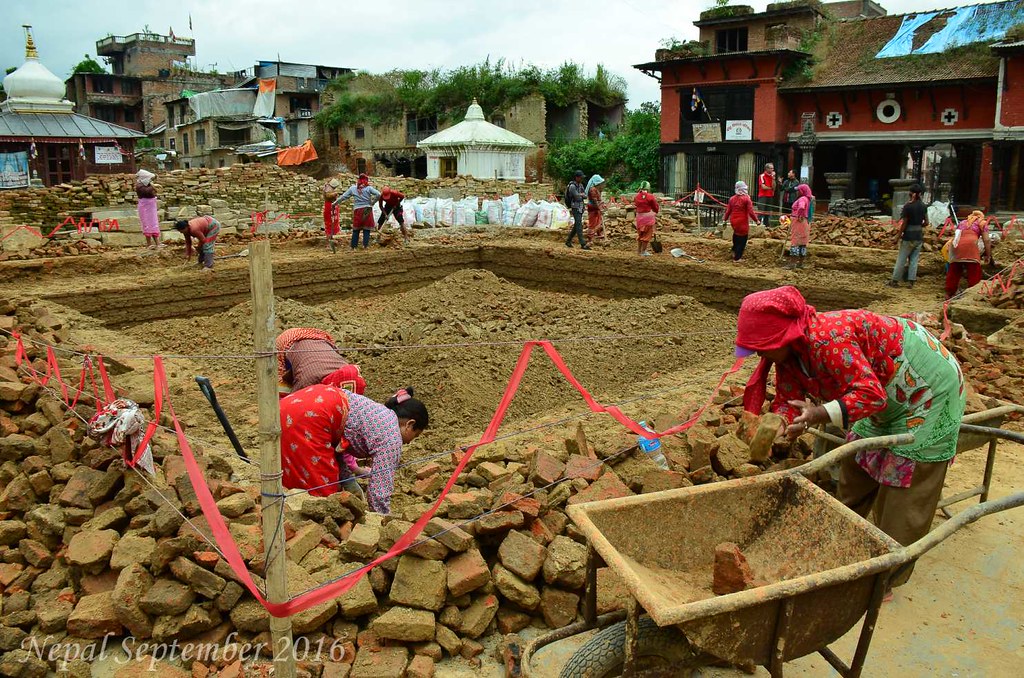 Five hundred schools were destroyed in the earthquake. Luckily the earthquake took place on a Saturday the only day school is not is session.
Five hundred schools were destroyed in the earthquake. Luckily the earthquake took place on a Saturday the only day school is not is session.
From Patan, we took a short drive to the outskirts of the city to visit Bungamati-a laidback Newari village where it is said that time has stood still. We walk on the cobbled street through the village with dry vegetables hanging from the balconies, ducks and roosters wandering, children running around, women washing clothes in the public or drying the paddies and elderly people chatting in the
paatis (public pavilion).
 In the afternoon we visit Pashupatinath Temple-the holiest Hindu pilgrimage destination in Nepal. The temple is situated on the bank Bagmati River-a tributary of the sacred Gangjes River. Admission to the temple courtyard is reserved for the Hindus only, but we could still see the complete temple and the activities from the eastern embankment of the river. While visiting we were able to witness the Hindu cremation services in progress.
In the afternoon we visit Pashupatinath Temple-the holiest Hindu pilgrimage destination in Nepal. The temple is situated on the bank Bagmati River-a tributary of the sacred Gangjes River. Admission to the temple courtyard is reserved for the Hindus only, but we could still see the complete temple and the activities from the eastern embankment of the river. While visiting we were able to witness the Hindu cremation services in progress.
For our last stop we visit Boudhanath Stupa which is believed to be the largest stupa architecture in the world! With an octagonal base symbolizing the Buddhist cosmos, the stupa is a giant white dome with 13 stepped golden spire and a parasol atop. The stupa dominates Kathmandu skyline and is a foremost attraction of the city. The area is dominantly Tibetan and reminds of the Barkhor area of Lhasa. This Stupa was also under repair from earthquake damage. This stupa is just a few blocks from our hotel so we walked back.
Day 3 - Tuesday September 27th
 Following breakfast, we drove to Bhaktapur (10 miles) -the smallest and the best preserved of the three medieval principalities of Kathmandu Valley. We visit the Durbar Square where we toured the former palaces and temples each with rich wood carving and stone sculptures. The Golden Gate of
Following breakfast, we drove to Bhaktapur (10 miles) -the smallest and the best preserved of the three medieval principalities of Kathmandu Valley. We visit the Durbar Square where we toured the former palaces and temples each with rich wood carving and stone sculptures. The Golden Gate of
the palace is considered the masterpiece metal work in the entire Nepal. We walk through the narrow alleys, stopping in the temples and monasteries and poking into the workshops of carvers and painters. We stopped at the pottery square and I learn the traditional ceramic pottery
making process, unbeknownst to our guide and teacher, I am an expert potter and impressed everyone with my skills of throwing a clay bowl.
 From Bhaktapur, we took a short drive through the paddy fields to Changu Narayan Temple situated north of Bhaktapur. This is a multi-roofed pagoda style temple with rich wood carving in the struts and beautiful stone icons in the premises. The temple also has a 5th century stone inscription which is the first written history of Nepal ever found. We had a light lunch and then departed for our hike through the villages and terraced fields to the hill resort of Nagarkot. Nagarkot, situated at an altitude of 2000m (6, 560 ft.) is well known for stupendous views of the Himalayas. We were not disappointed. We spent the night at Club Himalaya.
From Bhaktapur, we took a short drive through the paddy fields to Changu Narayan Temple situated north of Bhaktapur. This is a multi-roofed pagoda style temple with rich wood carving in the struts and beautiful stone icons in the premises. The temple also has a 5th century stone inscription which is the first written history of Nepal ever found. We had a light lunch and then departed for our hike through the villages and terraced fields to the hill resort of Nagarkot. Nagarkot, situated at an altitude of 2000m (6, 560 ft.) is well known for stupendous views of the Himalayas. We were not disappointed. We spent the night at Club Himalaya.
Day 4 - Wednesday September 28th
 Following breakfast, we transferred to the domestic airport for our flight to Pokhara-renowned as Nepal's capital for nature. It's a 35 minutes scenic flight that goes parallel to the Himalayas, offering breathtaking views of the western Himalayas on the right side of the plane and rivers and valleys on
Following breakfast, we transferred to the domestic airport for our flight to Pokhara-renowned as Nepal's capital for nature. It's a 35 minutes scenic flight that goes parallel to the Himalayas, offering breathtaking views of the western Himalayas on the right side of the plane and rivers and valleys on
the left. Upon arrival at Pokhara airport we met our Sherpa who will be joining us for the next 4 days of trekking, Bishnu flew with us and will be spending the remainder of the trip with us. We are very happy about this as after three days we feel Bishnu is part of our family.
Following a short briefing about the accommodation and facilities in the mountains and the trip itself, we transfer by road with our crew to Nayapul-the trail head for the trekking. The trail for some time goes along a ridgeline in the lower foothills of the Annapurnas with panoramic views of the Pokhara Valley and then drops to Modi Khola Valley ( Khola means river), where our Sanctuary Lodge is located. The location of the lodge serves as a perfect view point for Mount Machhapuchhre ( which means fishtail). Following a picnic lunch, we explore Birethanti -a small village set at the foot of the Modi Khola Valley at around 1,100 meters. Unfortunately the weather is still a little overcast so we did not get the views we were hopping for.
Sanctuary Lodge - Birenthanti, was absolutely splendid. The best part Margarite and I where the only guest so the staff of 6 spoiled us for our one night stay.
Day 5 - Thursday September 29th
Following a leisurely breakfast, we left the Sanctuary Lodge and headed out to Gurung Lodge in Majgaun, approximately 2 hrs easy walking. The lodge is built along the lines of a traditional
Nepalese village. Every room has spectacular views of the surrounding valley and mountains. After lunch at our lodge, we will visited Tanchok Village and visit a house turned ethnic museum. We also visited a local school and met the children and teachers and learn about the schooling system. Children love to test their English on us. We found the local population was made up of old folks and young children, it seems as there are less and less opportunities for the young adults in this small village. For that reason once most leave for higher education and do not return.
We spent the night at the Gurung Lodge, Majgaon. Again we were the only guest and again we were spoiled by the staff.
Day 6 - Friday September 30th
I want to mention our Sherpa Nuri is just fantastic, always has a smile, while he does not have a lot to carry (we pack light), he is leading the three of us, while we have hiking poles and top notch hiking boots, he is in sandals. We did get to meet Nuri's son as we passed though Nuri's village. Today we had a great breakfast with splendid views of the mountains, yes the clouds cleared at least for a little while. After breakfast, we found ourselves back on the trail and we treked through the unspoiled village of Patlekhet. The trail goes through sub-tropical forests that include tree orchids, rhododendrons and magnolias. There were a variety of birdlife as well as incredible mountain views. Along the way, we stopped at the village of Pothana where many Tibetan traders live and sell their souvenirs. We arrived at the Basanta Lodge in Dhampus.
The lodge is centered around a old Gurung village house and offers sweeping views of the entire Annapurna Range. After lunch at the lodge, we want for walk in the village. Basanta Lodge - Dhampus we will be our last stay on our trek, we again enjoyed the attention of the entire staff as again we were the only guests.
Day 7 - Saturday October 1st
Today is our last day of the trekking we have an easy and short trek. Following breakfast, we bid farewell to the friendly staff of Basant Lodge and descend through the wooded hillside and terraced farmland to Phedi at the valley floor. We meet our transport here and transfer to Pokhara. On the way
we stop in Tibetan refugee camp and pay a visit to the monastery. The camp was created when the Chinese took over Tibet and the Tibetans look for refuge in Nepal.
After the refugee camp we checked into the Fishtail Lodge, which is situated on a peninsula on the Lake, the only way to get to the lodge from Pokhara is via boat. The Lodge was great, once checked in we found a place in town to get our laundry done, had a nice lunch and then enjoyed the hotel pool for the rest of the day.
Day 8 - Sunday October 2nd
Today we explore Pokhara and see local attractions. Our first visit is to the non-tourist area where our driver drops and lets us walk around and mingle with the locals. From this location we could walk to the Bindhebasini Temple-the center of religious activities in Pokhara. This white dome- like structure
dominates a spacious stone – paved courtyard built atop a shady hillock. It is dedicated to Goddess Bhgawati, a manifestation of Goddess Durga. The park – like grounds offers a fine picnic area, and on Saturdays, and Tuesdays when devotees flock here to offer sacrifices, it takes on a festive flavor.
From this hill side we walked through Pokhara's colorful traditional Old Bazaar with ethnically diverse traders. The temples and monuments do show close architectural connection with the Newari styles of Kathmandu Valley. The market area is strewn with shops selling commodities ranging from edibles to and cloth to cosmetics and gold is a pleasant and shady spot to stroll around.
We encounter our first screw-up of the entire trip. We were to meet our driver to take us to the long
bridge, but no driver. Our guide Bishnu calls but no answer. Having a great and experienced guide is key on a trip like this. Without hesitation Bishnu hailed us a taxi and we were on our way. Once Bishnu got a hold of the driver he chewed him a new you know what!
The taxi dropped us at the hair raising gorge of Seti River at Mahendra Pool ( Pool means bridge) that provides a perfect view of the river’s dreadful rush and deep gorge created by its powerful flow. Amazingly, at certain places the river appears hardly two meters wide. However, its depth is quite beyond imagination, over 20 meters. From the gorge we walked to the Long Bridge, this is one of the longest pedestrian
suspension bridges in all of Nepal. We walked the complete length and returned while very stable looking down still gave us an uneasy feeling.
Once the driver found us we headed to Davis Fall, the falls are named after a British couple, the wife was floating in the lake when she went over the falls and was found several weeks latter. Yes, she perished. From the falls we walked across to the mysterious cave temple of Gupteshwara. This cave and temple were created from the rushing water of the falls, while the cave is thousands of years old, it was only discovered in the last century, with many buildings built right on top of it. With the water running very high we were not able to explore the entire cave.
We tool a quick tour of the local Tibetan village, we did not spend much time here as it was very similar to the Tibetan refuge village we had visited yesterday.
We added a stop at the International Mountain Museum. Well worth it. They have a complete History of Mountaineering in the Himalaya Mountains and other Mountain Ranges.
After the museum we decided to head back to the lodge and enjoy the pool an get some pictures of the Himalaya.
Day 9 - Monday October 3rd
After breakfast, we took a boating trip in Fewa Lake and visit the Island Temple of Barahi. Or at least rowed around it. Fewa Lake is the second largest lake of Nepal ( Rara Lake in Mugu District is the
largest one) and is the foremost attraction of Pokhara. There was a open water swim race going on in the lake and it was a lot of fun to watch the finish.
We gave the beautiful Pokhara Valley a farewell and headed to Bandipur-(pronounced as Bandipore) a traditional Newari Village.
We check in our accommodation at the Old Inn. What a lovely place a little rustic but that was to be expected. The owner and his family was fantastic and wanted to please us any way they could. We enjoyed a very nice lunch on our arrival.
After lunch we explore the village and the surroundings area. We decided to visit the Silk Farm, which is less than half an hour’s walk towards the west. After the drive we thought what a great way to stretch our legs. Once there we found that the silk factory was closed and going under some improvements. We did not get to see how the silk is made, but we had a wonderful walk. We spent some time talking with the locals we found the town was going through a renaissance and they have done a lot to attract tourist which has help the town prosper.
After dinner we headed to bed, only to be woken a few hours later by the loudest thunder I had ever heard, Dragon Thunder it is called. We even witnessed the transformer getting hit by lighting and blowing to pieces. Lucky the storm passed and we quickly fell back to sleep.
Day 10 Tuesday October 4th
In the morning after the rain there was a fairly thick fog, we decided to have a late breakfast and hope the fog would clear. At 10:00 with the air still fairly thick with fog or with our altitude it may have been clouds we set out to see some of the local sites.
We begin with a visit to the Khadga Devi Temple, the most sacred and auspicious temple in Bandipur. Then we head up to the Martyrs Memorial Area, which honors seven Bandipur men who
were killed during the anti-Rana insurrection of 1951. Then we head down to the shrine of Paarpani Mahadev (Shiva), who receives appeals for rain from Bandipur residents during dry spells. We return to the bazaar along the main trail, and visit the two other important temples -Bindhebashini and Mahalaxmi. The rich wooden carving and detailed brass-work that adorn the temple are replicas of those found in the many old pagoda structures of the Kathmandu Valley.
It is now time to depart Bandipur we will be backtracking a bit to Damauli where we will be starting our white water rafting adventure for the next two days, We will be rafting the Seti River. Bishnu will be traveling with us on the raft while our driver goes ahead to our destination. We also have an additional guide and two Sherpa's with us.
The water was running fast after an hour we stopped for some lunch and a little walk. Once back on the river we had a few exciting rapids and then arrived at the Seti River Camp. The camp consists of safari-style tents with beds, a changing room, a verandah and an attached bathroom. With the river running as fast as it was we arrived early afternoon. Margarite and Bishnu took a walk to the local village while I relaxed and caught up on the some reading.
The service and meal were what we have come
to expect nothing less than perfect. After dinner we were ready to hit the sack and we did, until about 2:00 am when we got hit with another very loud thunder storm, again passing quickly only to show up again at 4:00 am this time even louder. The good news both times we quickly fell back to sleep.
Day 11 - Wednesday October 5th
Following breakfast, we set off on the river again. There are five Class II rapids, which are 50 m long or less, nothing crazy but enough to wake you up. The remainder of the trip was very relaxing as we enjoy the surrounding nature and countryside. The trip concluded in Gaighat where we meet our transport. He was late again, but we were fairly sure he would be late, as we rafted on the river we could see the road was all backed up do to a mud slide from the rain the night before.
Once we had changed and repacked we were on our way to our lodge in Chitwan National Park about an hours drive. We will be staying at the Jungle Villa Resort near the park gate. The resort has three guest blocks, each comprising of 8 air-conditioned and well-furnished rooms with attached baths with 24 hours hot and cold water supply. Each room has a verandah that overlooks the river.
Once we arrived at the resort we had lunch and relaxed before we were escorted to the elephant embarkation platform. The elephant back safari lasts
1 to 2 hr and probably the most adventurous of all the excursions in Chitwan. We spotted Rhinos, primarily a mother and her child. We saw some spotted deer, jungle fowls, and peacock. Tiger population in Chitwan National Park is about 100 but it's a rare sight due to thick vegetation and the fact that Tigers are nocturnal animals. We did not see any. I was able to drive the Elephant the name of an elephant driver is Mahout. While I say I drove the elephant I am pretty sure the elephant knew where she was going better than I did.
Day 12 Thursday October 6th
This morning we are beginning our day with a traditional dugout canoe trip in Rapti River. The canoe trip offers an opportunity to watch two species of crocodiles Marsh Muggar and Gharial. The Gharial
has been listed as the endangered species. We will also see some aquatic birds such as kingfishers, egrets, storks, sand pipers, darter, etc. The ride lasted about and hour. The canoe dropped us at the Turtle and Crocodiles sanctuary were they are working on reinvigorating the populations of both animals.
After an educational tour of the sanctuary and a walking safari of the park we find the canoes and they transport us back to the Jungle Villa Resort for a very pleasant lunch.
In the afternoon we visit the Elephant breeding and training ground. We learned only female elephants do the Safari as they are less aggressive. We also learned that two trainers are assigned to
each elephant and they are paired for the duration. Not only do the elephants learn the commands they are also learn the trainers voice.
After visiting with the elephants we took a tour of the local Chitwan Village we saw families living the way they have lived since migrating from India. Back when malaria was prevalent in this area, the native people were immune. It was thought because of the amount of rice wine they drank. It was later discovered they have a mutation in their blood that keeps them from getting malaria.
After the tour of the village we walked into the larger town of Chitwan. They were getting ready for the annual festival held national each year. One of the traditions is building large swings out of bamboo. The idea is the swing allows you to get closer to heaven. We also came upon a family that was setting up for a wedding the next day. It is typical to have weddings around festival time since so many family members come in for festival. We were welcomed to the wedding preparation and invited to taste the food they were preparing all very delicious.
Day 28 - Friday October 7th
Margarite got up early and went for an hour long birding tour in the neighboring forest. Chitwan
National Park provides habitat to more than 600 different species of resident and migratory birds. Following breakfast, we are transferred to the airport (40 minutes) for flight back to Kathmandu (25 minutes).
Once is Kathmandu we returned to purchase the Tibetan Singing Bowl at Om Handicrafts. We got a demonstration of these bowls when we first arrived in Nepal, but held off purchasing so we did not have to carry the bowl around with us. The folks at Om Handicrafts could not have been nicer they took their time and showed us many bowls and the different properties they had. We were very happy with our purchase.
We had time to kill we convinced Bishnu to go see his family we were fine on our own. We walked the street of Kathmandu, people watching and enjoying the culture. We finally decided to call it a night.
Day 29 - Saturday October 8th
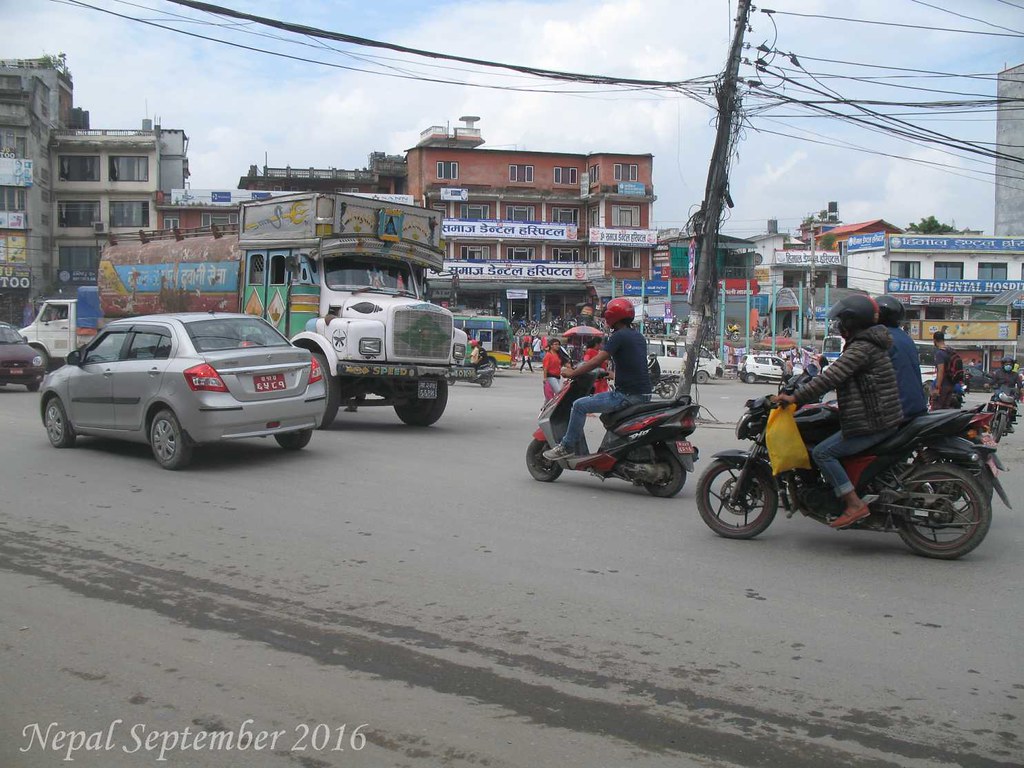 First thing we will be doing is visiting Mount Everest, this was the trip we had planned in the first day in Nepal, but it was canceled because of the clouds.
Everest View flight, also known as mountain flight is an hour long flight departing from Kathmandu early morning that gives you an opportunity to view Mount Everest and the other 8000m high snow capped mountains of the Himalaya. The flight is operated by Buddha Air (Beech D craft). Everyone gets a window seat. What a great way to see the mountains. The pilot lets you come up in to the cockpit for a better view.
First thing we will be doing is visiting Mount Everest, this was the trip we had planned in the first day in Nepal, but it was canceled because of the clouds.
Everest View flight, also known as mountain flight is an hour long flight departing from Kathmandu early morning that gives you an opportunity to view Mount Everest and the other 8000m high snow capped mountains of the Himalaya. The flight is operated by Buddha Air (Beech D craft). Everyone gets a window seat. What a great way to see the mountains. The pilot lets you come up in to the cockpit for a better view.
Our flight back to the United States was not until 9:00 pm so we had the day to enjoy Kathmandu and also treat ourselves to a massage. At 7:00 Bishnu picked us up to take us to the airport, saying goodbye is always so hard.
Well on to our next adventure.
Cheers,
DUG
Video
Pictures
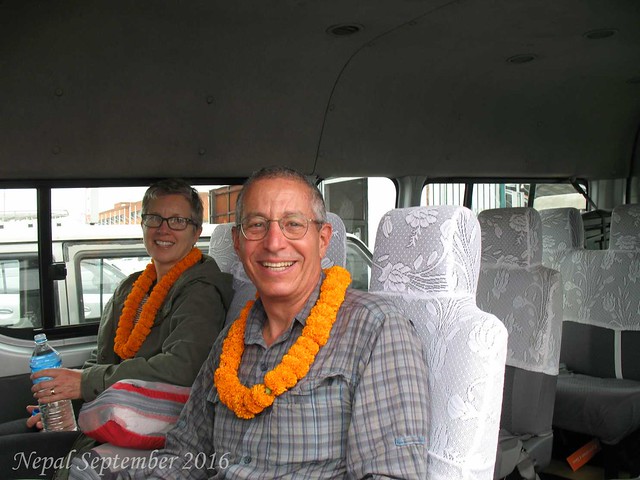
As I had mentioned in my post about Bhutan, to get in and out of Bhutan you go through Bangkok,
Thailand or Kathmandu, Nepal. We decided to arrive through Bangkok and depart through Kathmandu, and spend some time in each place. This is the story of our time in Nepal
Arrive September 25th 8:15 AM - Depart October 8th 9:20 PM
Day 1 - Sunday September 25th
We arrived in Kathmandu after a very pleasant flight from Paro, Bhutan. We were ready for our next adventure. Thirteen days in Nepal.
We were met at the airport as we exited by our guide who will be traveling with us through Nepal, Bishnu Acharya. We booked our private trip to Bhutan and Nepal through Bhutan Karma Trails. As I mentioned they did an awesome job for us in Bhutan. For the Nepal part of the trip Bhutan Karma Trails partnered with High Asia Tours we will later find they are as awesome as Bhutan Karma Trails as our trip went off without a hitch.
First things first, we had about a weeks worth of dirty clothes with us, so Bishnu arranged for us to drop our laundry to be cleaned. Nine Hundred Nepali Rupee for about 15 kilograms of laundry or $9.00 USD. The standard price was 700 Rupee but we paid extra to have it done within a few hours.
After dumping the laundry we headed for lunch. We decided on a Northfield Cafe the best Tex-Mex in Nepal. It was actually very good and nice to have some food we were use too, after 2 weeks in Bhutan.
After lunch we headed to Savayambhu Mayachaitya also known as the Monkey Temple. This Stupa is located on one of the highest points of Kathmandu which gave us a great perspective of the city. The city of Kathmandu has a population of over one million people. At first this was a little overwhelming with the noise, cars, pollution. Especially after spending two weeks in country whose
entire population is under 800,000 people.
The name Monkey temple comes from the fact that the Temple is overrun by monkeys. Yes in the middle of the city, monkeys hundreds of them. The monkeys are so brazen we witness one steal a banana right out of a tourist hand.
Nepal is predominately Hindu but there are many Buddhist also living in Nepal, in fact the Monkey temple has both a Hindu and Buddhist Temple on this site.
We also visited Kathmandu Durbar Square with the former Royal Palace complex and a cluster of ancient and medieval temples. Each city /town has a Dubar Square which is right out side the original palace for that area. Before Nepal was unified into one country it had many different districts with their own palace and royal family.
The palace and temples demonstrate intricately carved wood works in the balconies and windows. Of all the temples of Durbar Square, the most prominent are the temple of Living Goddess-Kumari and the legendary Kasthamandap Temple-which is believed to have been built of a single tree trunk.
We walked Durbar Square and the narrow alleys of the area, taking our time getting use to the motorbikes buzzing around us. It was like we were back in Bangkok.
Before heading to our hotel we walked through the vibrant streets of Assan and Indrachowk-the traditional bazaars of Kathmandu. We arrive at our hotel, Tibet International Boutique. We will be spending three night here, if first impressions mean anything we would be very happy.
The Owner of High Asia Tours, Dave would be taking us to dinner. We went to a traditional Nepali restaurant which included folklore dancing. We also got to pick up our laundry, what a great day ending with clean clothes and a great meal with great company.
Day 2 - Monday September 26th
Our plan was to visit the top of Everest, what is the saying the best laid plans, it ended up being to cloudy so we postponed toward the end of the trip.
Following breakfast, we visit Patan City-famed as the City of Arts and Craft. The dramatic setting of
Patan Durbar Square with the palace and beautiful temples and the houses with traditional architecture gives you the feel, of traveling in a medieval time. We walk through the narrow cobbled streets with metal, wood, traditional thangka painting workshops. Also jewelry and handicrafts outlets lined up on both sides. We poke into the workshops and meet the artisans. We stopped at Om Handicrafts to get a demonstration of the Tibetan signing bowls. The are specially crafted bowls, called singing bowls made by monks that when used properly can help you relax and stay healthy. We decide we will purchase a bowl, but waited until we return to Kathmandu at the end of the trip.
We visit the religious centers of Patan such as Golden Temple, Kumbheshwar Temple, Mahaboudha Temple, to name few, and watch the rituals and rites there. The temples are testimony of rich architectures of the medieval times.
Though the Nepal earthquake happened over a year ago the damage was evident, many building and historical sites are still being rebuilt. The goal is to be back up and running in 5 years. Most of the manual labor is being down by women as the men have left for the middle east where the wages are higher and they can save money to send home to their families.
 Five hundred schools were destroyed in the earthquake. Luckily the earthquake took place on a Saturday the only day school is not is session.
Five hundred schools were destroyed in the earthquake. Luckily the earthquake took place on a Saturday the only day school is not is session.
From Patan, we took a short drive to the outskirts of the city to visit Bungamati-a laidback Newari village where it is said that time has stood still. We walk on the cobbled street through the village with dry vegetables hanging from the balconies, ducks and roosters wandering, children running around, women washing clothes in the public or drying the paddies and elderly people chatting in the
paatis (public pavilion).
 In the afternoon we visit Pashupatinath Temple-the holiest Hindu pilgrimage destination in Nepal. The temple is situated on the bank Bagmati River-a tributary of the sacred Gangjes River. Admission to the temple courtyard is reserved for the Hindus only, but we could still see the complete temple and the activities from the eastern embankment of the river. While visiting we were able to witness the Hindu cremation services in progress.
In the afternoon we visit Pashupatinath Temple-the holiest Hindu pilgrimage destination in Nepal. The temple is situated on the bank Bagmati River-a tributary of the sacred Gangjes River. Admission to the temple courtyard is reserved for the Hindus only, but we could still see the complete temple and the activities from the eastern embankment of the river. While visiting we were able to witness the Hindu cremation services in progress.
For our last stop we visit Boudhanath Stupa which is believed to be the largest stupa architecture in the world! With an octagonal base symbolizing the Buddhist cosmos, the stupa is a giant white dome with 13 stepped golden spire and a parasol atop. The stupa dominates Kathmandu skyline and is a foremost attraction of the city. The area is dominantly Tibetan and reminds of the Barkhor area of Lhasa. This Stupa was also under repair from earthquake damage. This stupa is just a few blocks from our hotel so we walked back.
Day 3 - Tuesday September 27th
 Following breakfast, we drove to Bhaktapur (10 miles) -the smallest and the best preserved of the three medieval principalities of Kathmandu Valley. We visit the Durbar Square where we toured the former palaces and temples each with rich wood carving and stone sculptures. The Golden Gate of
Following breakfast, we drove to Bhaktapur (10 miles) -the smallest and the best preserved of the three medieval principalities of Kathmandu Valley. We visit the Durbar Square where we toured the former palaces and temples each with rich wood carving and stone sculptures. The Golden Gate of the palace is considered the masterpiece metal work in the entire Nepal. We walk through the narrow alleys, stopping in the temples and monasteries and poking into the workshops of carvers and painters. We stopped at the pottery square and I learn the traditional ceramic pottery
making process, unbeknownst to our guide and teacher, I am an expert potter and impressed everyone with my skills of throwing a clay bowl.
 From Bhaktapur, we took a short drive through the paddy fields to Changu Narayan Temple situated north of Bhaktapur. This is a multi-roofed pagoda style temple with rich wood carving in the struts and beautiful stone icons in the premises. The temple also has a 5th century stone inscription which is the first written history of Nepal ever found. We had a light lunch and then departed for our hike through the villages and terraced fields to the hill resort of Nagarkot. Nagarkot, situated at an altitude of 2000m (6, 560 ft.) is well known for stupendous views of the Himalayas. We were not disappointed. We spent the night at Club Himalaya.
From Bhaktapur, we took a short drive through the paddy fields to Changu Narayan Temple situated north of Bhaktapur. This is a multi-roofed pagoda style temple with rich wood carving in the struts and beautiful stone icons in the premises. The temple also has a 5th century stone inscription which is the first written history of Nepal ever found. We had a light lunch and then departed for our hike through the villages and terraced fields to the hill resort of Nagarkot. Nagarkot, situated at an altitude of 2000m (6, 560 ft.) is well known for stupendous views of the Himalayas. We were not disappointed. We spent the night at Club Himalaya. Day 4 - Wednesday September 28th
 Following breakfast, we transferred to the domestic airport for our flight to Pokhara-renowned as Nepal's capital for nature. It's a 35 minutes scenic flight that goes parallel to the Himalayas, offering breathtaking views of the western Himalayas on the right side of the plane and rivers and valleys on
Following breakfast, we transferred to the domestic airport for our flight to Pokhara-renowned as Nepal's capital for nature. It's a 35 minutes scenic flight that goes parallel to the Himalayas, offering breathtaking views of the western Himalayas on the right side of the plane and rivers and valleys on the left. Upon arrival at Pokhara airport we met our Sherpa who will be joining us for the next 4 days of trekking, Bishnu flew with us and will be spending the remainder of the trip with us. We are very happy about this as after three days we feel Bishnu is part of our family.
Following a short briefing about the accommodation and facilities in the mountains and the trip itself, we transfer by road with our crew to Nayapul-the trail head for the trekking. The trail for some time goes along a ridgeline in the lower foothills of the Annapurnas with panoramic views of the Pokhara Valley and then drops to Modi Khola Valley ( Khola means river), where our Sanctuary Lodge is located. The location of the lodge serves as a perfect view point for Mount Machhapuchhre ( which means fishtail). Following a picnic lunch, we explore Birethanti -a small village set at the foot of the Modi Khola Valley at around 1,100 meters. Unfortunately the weather is still a little overcast so we did not get the views we were hopping for.
Sanctuary Lodge - Birenthanti, was absolutely splendid. The best part Margarite and I where the only guest so the staff of 6 spoiled us for our one night stay.
Day 5 - Thursday September 29th
Following a leisurely breakfast, we left the Sanctuary Lodge and headed out to Gurung Lodge in Majgaun, approximately 2 hrs easy walking. The lodge is built along the lines of a traditional
Nepalese village. Every room has spectacular views of the surrounding valley and mountains. After lunch at our lodge, we will visited Tanchok Village and visit a house turned ethnic museum. We also visited a local school and met the children and teachers and learn about the schooling system. Children love to test their English on us. We found the local population was made up of old folks and young children, it seems as there are less and less opportunities for the young adults in this small village. For that reason once most leave for higher education and do not return.
We spent the night at the Gurung Lodge, Majgaon. Again we were the only guest and again we were spoiled by the staff.
Day 6 - Friday September 30th
I want to mention our Sherpa Nuri is just fantastic, always has a smile, while he does not have a lot to carry (we pack light), he is leading the three of us, while we have hiking poles and top notch hiking boots, he is in sandals. We did get to meet Nuri's son as we passed though Nuri's village. Today we had a great breakfast with splendid views of the mountains, yes the clouds cleared at least for a little while. After breakfast, we found ourselves back on the trail and we treked through the unspoiled village of Patlekhet. The trail goes through sub-tropical forests that include tree orchids, rhododendrons and magnolias. There were a variety of birdlife as well as incredible mountain views. Along the way, we stopped at the village of Pothana where many Tibetan traders live and sell their souvenirs. We arrived at the Basanta Lodge in Dhampus.
The lodge is centered around a old Gurung village house and offers sweeping views of the entire Annapurna Range. After lunch at the lodge, we want for walk in the village. Basanta Lodge - Dhampus we will be our last stay on our trek, we again enjoyed the attention of the entire staff as again we were the only guests.
Day 7 - Saturday October 1st
Today is our last day of the trekking we have an easy and short trek. Following breakfast, we bid farewell to the friendly staff of Basant Lodge and descend through the wooded hillside and terraced farmland to Phedi at the valley floor. We meet our transport here and transfer to Pokhara. On the way
we stop in Tibetan refugee camp and pay a visit to the monastery. The camp was created when the Chinese took over Tibet and the Tibetans look for refuge in Nepal.
After the refugee camp we checked into the Fishtail Lodge, which is situated on a peninsula on the Lake, the only way to get to the lodge from Pokhara is via boat. The Lodge was great, once checked in we found a place in town to get our laundry done, had a nice lunch and then enjoyed the hotel pool for the rest of the day.
Day 8 - Sunday October 2nd
Today we explore Pokhara and see local attractions. Our first visit is to the non-tourist area where our driver drops and lets us walk around and mingle with the locals. From this location we could walk to the Bindhebasini Temple-the center of religious activities in Pokhara. This white dome- like structure
dominates a spacious stone – paved courtyard built atop a shady hillock. It is dedicated to Goddess Bhgawati, a manifestation of Goddess Durga. The park – like grounds offers a fine picnic area, and on Saturdays, and Tuesdays when devotees flock here to offer sacrifices, it takes on a festive flavor.
From this hill side we walked through Pokhara's colorful traditional Old Bazaar with ethnically diverse traders. The temples and monuments do show close architectural connection with the Newari styles of Kathmandu Valley. The market area is strewn with shops selling commodities ranging from edibles to and cloth to cosmetics and gold is a pleasant and shady spot to stroll around.
We encounter our first screw-up of the entire trip. We were to meet our driver to take us to the long
bridge, but no driver. Our guide Bishnu calls but no answer. Having a great and experienced guide is key on a trip like this. Without hesitation Bishnu hailed us a taxi and we were on our way. Once Bishnu got a hold of the driver he chewed him a new you know what!
The taxi dropped us at the hair raising gorge of Seti River at Mahendra Pool ( Pool means bridge) that provides a perfect view of the river’s dreadful rush and deep gorge created by its powerful flow. Amazingly, at certain places the river appears hardly two meters wide. However, its depth is quite beyond imagination, over 20 meters. From the gorge we walked to the Long Bridge, this is one of the longest pedestrian
suspension bridges in all of Nepal. We walked the complete length and returned while very stable looking down still gave us an uneasy feeling.
Once the driver found us we headed to Davis Fall, the falls are named after a British couple, the wife was floating in the lake when she went over the falls and was found several weeks latter. Yes, she perished. From the falls we walked across to the mysterious cave temple of Gupteshwara. This cave and temple were created from the rushing water of the falls, while the cave is thousands of years old, it was only discovered in the last century, with many buildings built right on top of it. With the water running very high we were not able to explore the entire cave.
We tool a quick tour of the local Tibetan village, we did not spend much time here as it was very similar to the Tibetan refuge village we had visited yesterday.
We added a stop at the International Mountain Museum. Well worth it. They have a complete History of Mountaineering in the Himalaya Mountains and other Mountain Ranges.
After the museum we decided to head back to the lodge and enjoy the pool an get some pictures of the Himalaya.
Day 9 - Monday October 3rd
After breakfast, we took a boating trip in Fewa Lake and visit the Island Temple of Barahi. Or at least rowed around it. Fewa Lake is the second largest lake of Nepal ( Rara Lake in Mugu District is the
largest one) and is the foremost attraction of Pokhara. There was a open water swim race going on in the lake and it was a lot of fun to watch the finish.
We gave the beautiful Pokhara Valley a farewell and headed to Bandipur-(pronounced as Bandipore) a traditional Newari Village.
We check in our accommodation at the Old Inn. What a lovely place a little rustic but that was to be expected. The owner and his family was fantastic and wanted to please us any way they could. We enjoyed a very nice lunch on our arrival.
After lunch we explore the village and the surroundings area. We decided to visit the Silk Farm, which is less than half an hour’s walk towards the west. After the drive we thought what a great way to stretch our legs. Once there we found that the silk factory was closed and going under some improvements. We did not get to see how the silk is made, but we had a wonderful walk. We spent some time talking with the locals we found the town was going through a renaissance and they have done a lot to attract tourist which has help the town prosper.
After dinner we headed to bed, only to be woken a few hours later by the loudest thunder I had ever heard, Dragon Thunder it is called. We even witnessed the transformer getting hit by lighting and blowing to pieces. Lucky the storm passed and we quickly fell back to sleep.
Day 10 Tuesday October 4th
In the morning after the rain there was a fairly thick fog, we decided to have a late breakfast and hope the fog would clear. At 10:00 with the air still fairly thick with fog or with our altitude it may have been clouds we set out to see some of the local sites.
We begin with a visit to the Khadga Devi Temple, the most sacred and auspicious temple in Bandipur. Then we head up to the Martyrs Memorial Area, which honors seven Bandipur men who
were killed during the anti-Rana insurrection of 1951. Then we head down to the shrine of Paarpani Mahadev (Shiva), who receives appeals for rain from Bandipur residents during dry spells. We return to the bazaar along the main trail, and visit the two other important temples -Bindhebashini and Mahalaxmi. The rich wooden carving and detailed brass-work that adorn the temple are replicas of those found in the many old pagoda structures of the Kathmandu Valley.
It is now time to depart Bandipur we will be backtracking a bit to Damauli where we will be starting our white water rafting adventure for the next two days, We will be rafting the Seti River. Bishnu will be traveling with us on the raft while our driver goes ahead to our destination. We also have an additional guide and two Sherpa's with us.
The water was running fast after an hour we stopped for some lunch and a little walk. Once back on the river we had a few exciting rapids and then arrived at the Seti River Camp. The camp consists of safari-style tents with beds, a changing room, a verandah and an attached bathroom. With the river running as fast as it was we arrived early afternoon. Margarite and Bishnu took a walk to the local village while I relaxed and caught up on the some reading.
The service and meal were what we have come
to expect nothing less than perfect. After dinner we were ready to hit the sack and we did, until about 2:00 am when we got hit with another very loud thunder storm, again passing quickly only to show up again at 4:00 am this time even louder. The good news both times we quickly fell back to sleep.
Day 11 - Wednesday October 5th
Following breakfast, we set off on the river again. There are five Class II rapids, which are 50 m long or less, nothing crazy but enough to wake you up. The remainder of the trip was very relaxing as we enjoy the surrounding nature and countryside. The trip concluded in Gaighat where we meet our transport. He was late again, but we were fairly sure he would be late, as we rafted on the river we could see the road was all backed up do to a mud slide from the rain the night before.
Once we had changed and repacked we were on our way to our lodge in Chitwan National Park about an hours drive. We will be staying at the Jungle Villa Resort near the park gate. The resort has three guest blocks, each comprising of 8 air-conditioned and well-furnished rooms with attached baths with 24 hours hot and cold water supply. Each room has a verandah that overlooks the river.
Once we arrived at the resort we had lunch and relaxed before we were escorted to the elephant embarkation platform. The elephant back safari lasts
1 to 2 hr and probably the most adventurous of all the excursions in Chitwan. We spotted Rhinos, primarily a mother and her child. We saw some spotted deer, jungle fowls, and peacock. Tiger population in Chitwan National Park is about 100 but it's a rare sight due to thick vegetation and the fact that Tigers are nocturnal animals. We did not see any. I was able to drive the Elephant the name of an elephant driver is Mahout. While I say I drove the elephant I am pretty sure the elephant knew where she was going better than I did.
Day 12 Thursday October 6th
This morning we are beginning our day with a traditional dugout canoe trip in Rapti River. The canoe trip offers an opportunity to watch two species of crocodiles Marsh Muggar and Gharial. The Gharial
has been listed as the endangered species. We will also see some aquatic birds such as kingfishers, egrets, storks, sand pipers, darter, etc. The ride lasted about and hour. The canoe dropped us at the Turtle and Crocodiles sanctuary were they are working on reinvigorating the populations of both animals.
After an educational tour of the sanctuary and a walking safari of the park we find the canoes and they transport us back to the Jungle Villa Resort for a very pleasant lunch.
In the afternoon we visit the Elephant breeding and training ground. We learned only female elephants do the Safari as they are less aggressive. We also learned that two trainers are assigned to
each elephant and they are paired for the duration. Not only do the elephants learn the commands they are also learn the trainers voice.
After visiting with the elephants we took a tour of the local Chitwan Village we saw families living the way they have lived since migrating from India. Back when malaria was prevalent in this area, the native people were immune. It was thought because of the amount of rice wine they drank. It was later discovered they have a mutation in their blood that keeps them from getting malaria.
After the tour of the village we walked into the larger town of Chitwan. They were getting ready for the annual festival held national each year. One of the traditions is building large swings out of bamboo. The idea is the swing allows you to get closer to heaven. We also came upon a family that was setting up for a wedding the next day. It is typical to have weddings around festival time since so many family members come in for festival. We were welcomed to the wedding preparation and invited to taste the food they were preparing all very delicious.
Day 28 - Friday October 7th
Margarite got up early and went for an hour long birding tour in the neighboring forest. Chitwan
National Park provides habitat to more than 600 different species of resident and migratory birds. Following breakfast, we are transferred to the airport (40 minutes) for flight back to Kathmandu (25 minutes).
Once is Kathmandu we returned to purchase the Tibetan Singing Bowl at Om Handicrafts. We got a demonstration of these bowls when we first arrived in Nepal, but held off purchasing so we did not have to carry the bowl around with us. The folks at Om Handicrafts could not have been nicer they took their time and showed us many bowls and the different properties they had. We were very happy with our purchase.
We had time to kill we convinced Bishnu to go see his family we were fine on our own. We walked the street of Kathmandu, people watching and enjoying the culture. We finally decided to call it a night.
Day 29 - Saturday October 8th
 First thing we will be doing is visiting Mount Everest, this was the trip we had planned in the first day in Nepal, but it was canceled because of the clouds.
Everest View flight, also known as mountain flight is an hour long flight departing from Kathmandu early morning that gives you an opportunity to view Mount Everest and the other 8000m high snow capped mountains of the Himalaya. The flight is operated by Buddha Air (Beech D craft). Everyone gets a window seat. What a great way to see the mountains. The pilot lets you come up in to the cockpit for a better view.
First thing we will be doing is visiting Mount Everest, this was the trip we had planned in the first day in Nepal, but it was canceled because of the clouds.
Everest View flight, also known as mountain flight is an hour long flight departing from Kathmandu early morning that gives you an opportunity to view Mount Everest and the other 8000m high snow capped mountains of the Himalaya. The flight is operated by Buddha Air (Beech D craft). Everyone gets a window seat. What a great way to see the mountains. The pilot lets you come up in to the cockpit for a better view.
Our flight back to the United States was not until 9:00 pm so we had the day to enjoy Kathmandu and also treat ourselves to a massage. At 7:00 Bishnu picked us up to take us to the airport, saying goodbye is always so hard.
Well on to our next adventure.
Cheers,
DUG
Video
Pictures


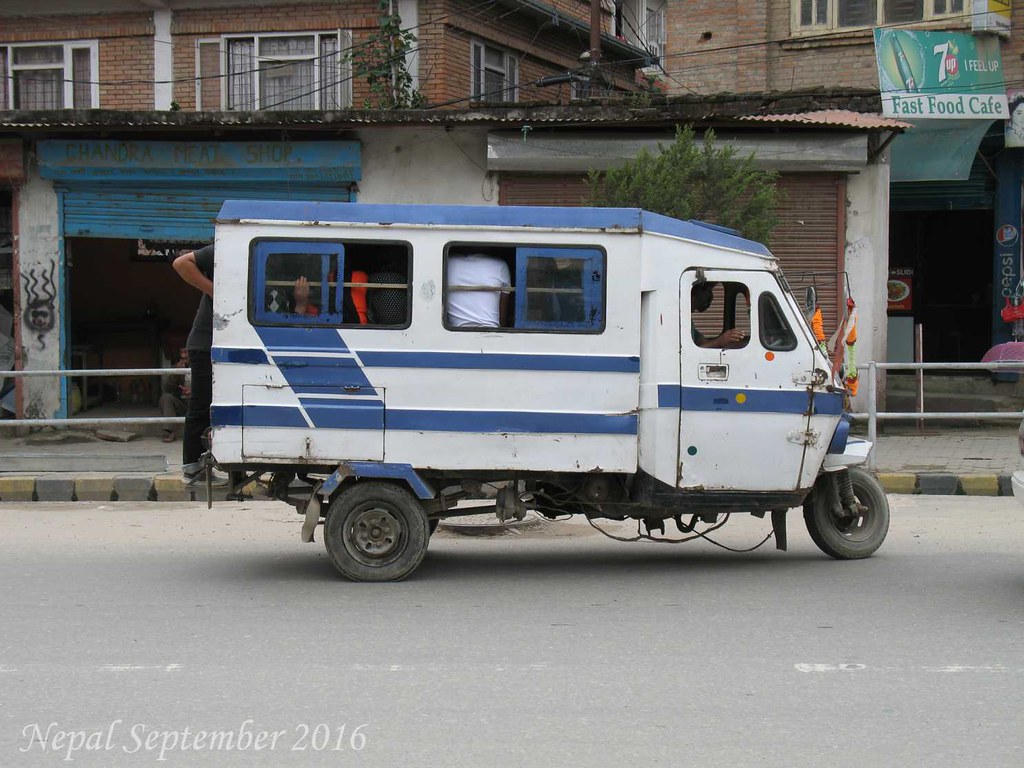
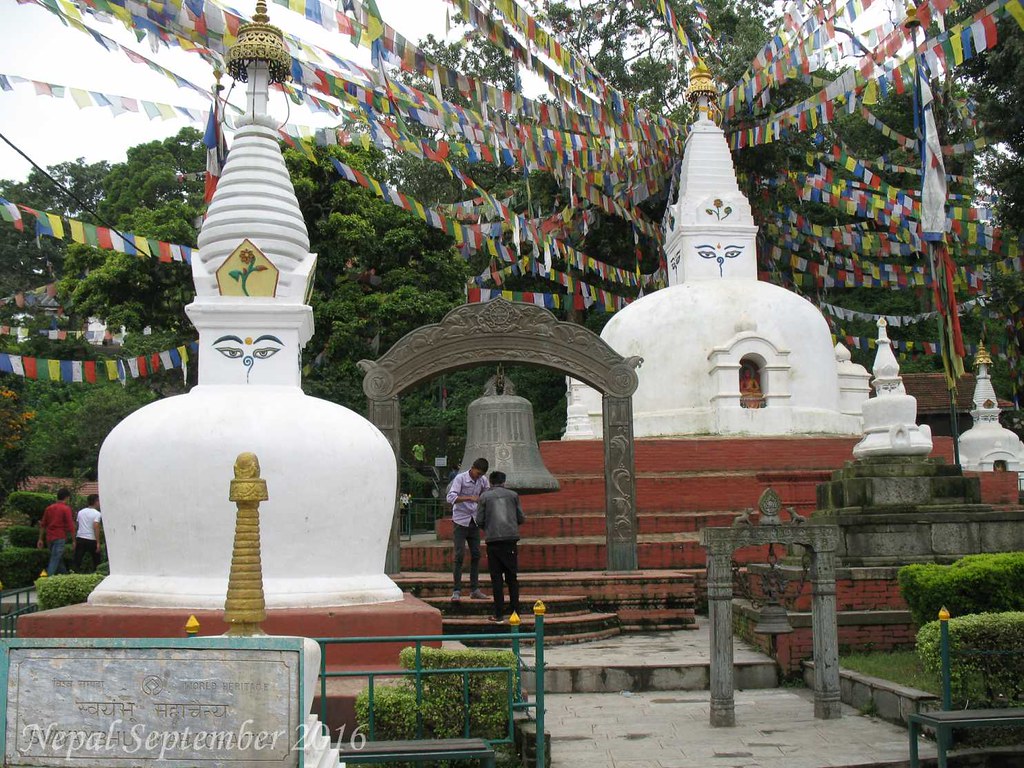
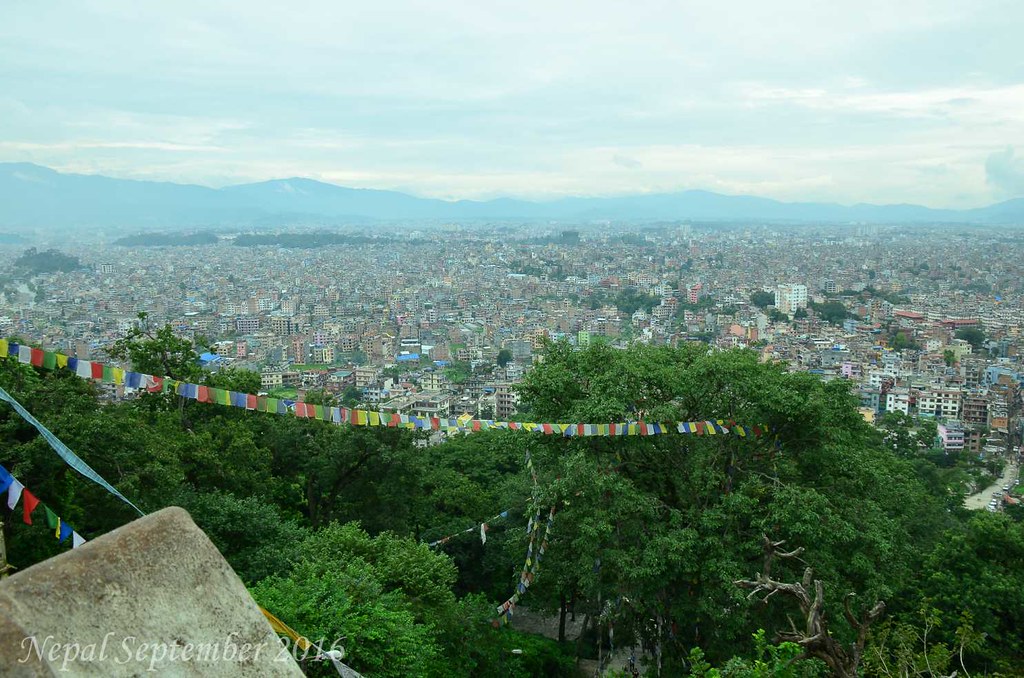





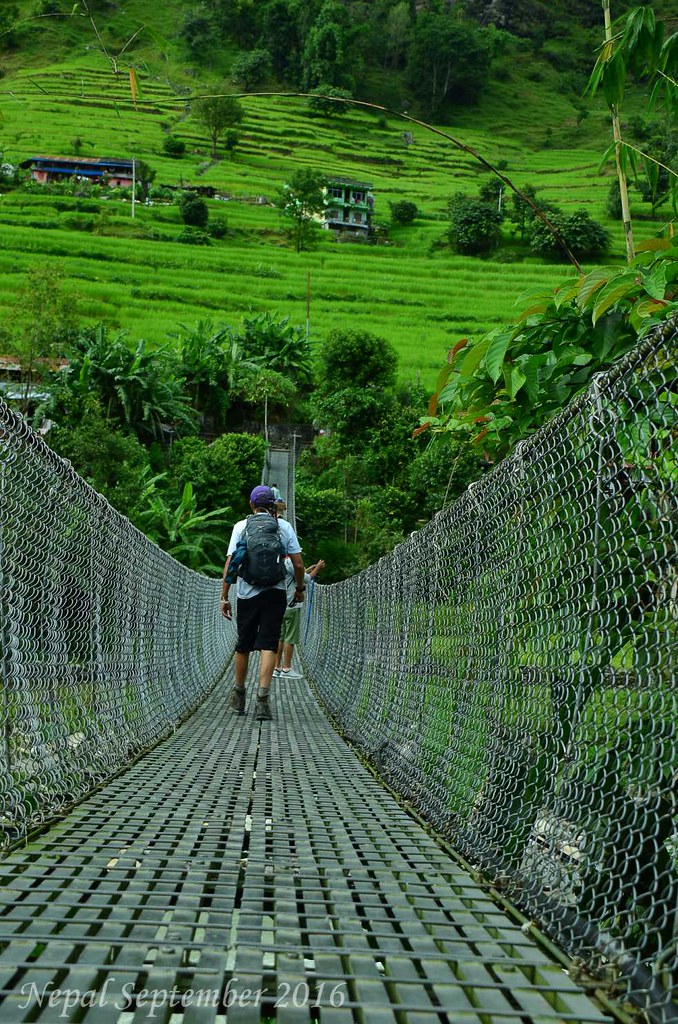

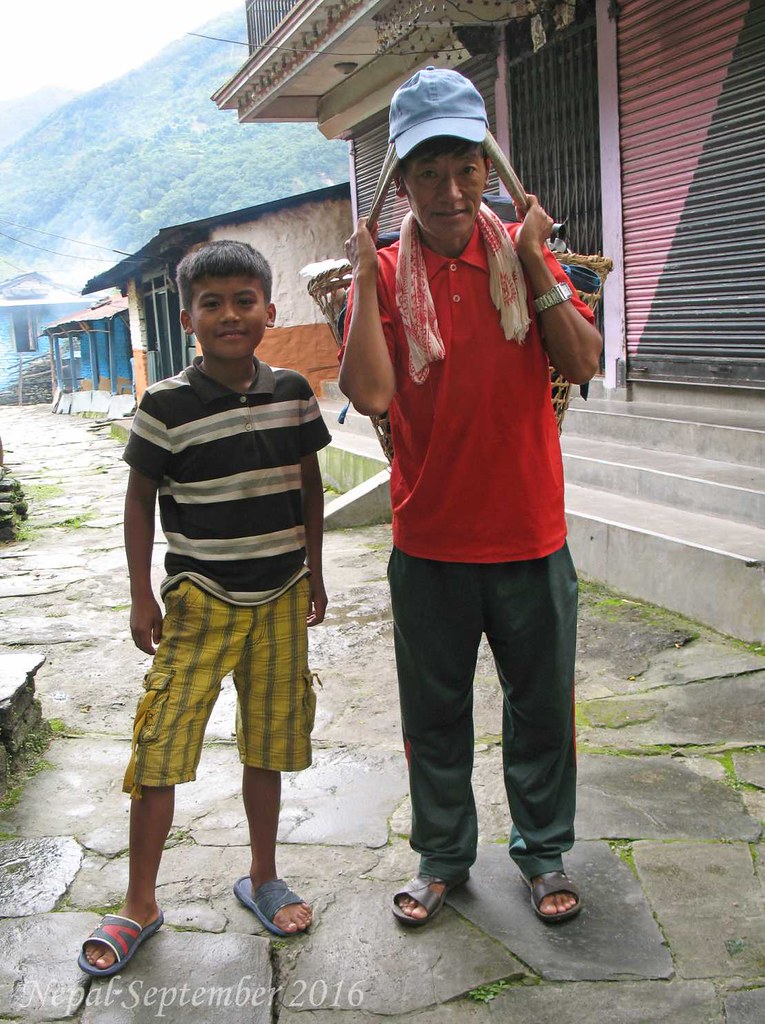





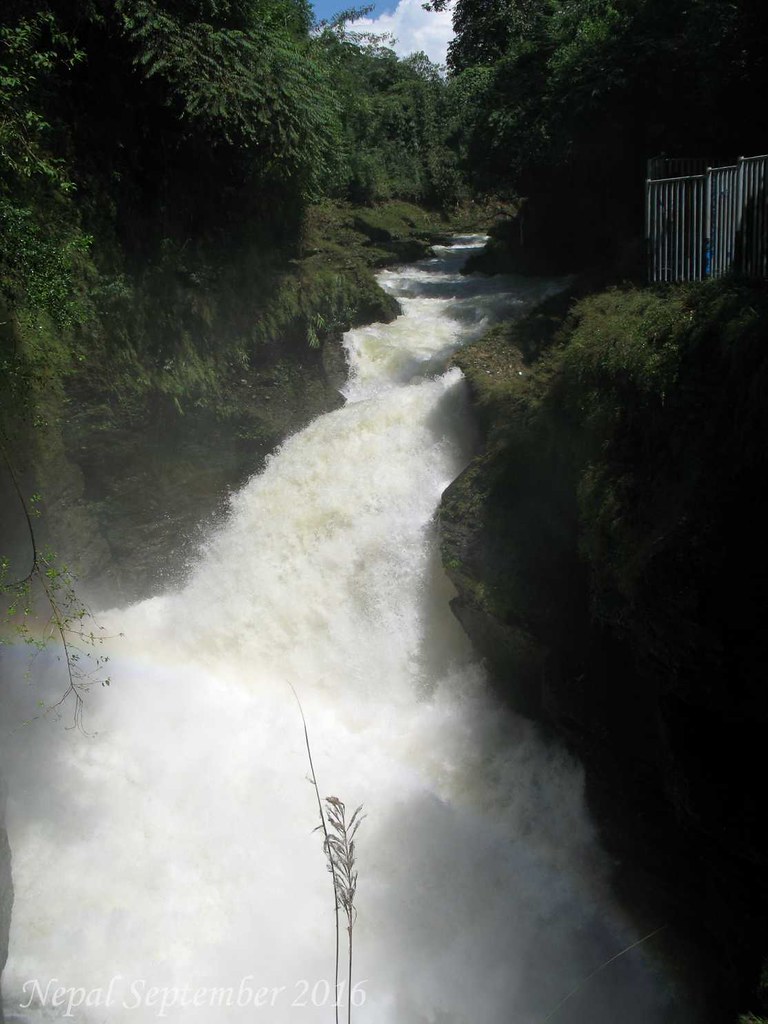

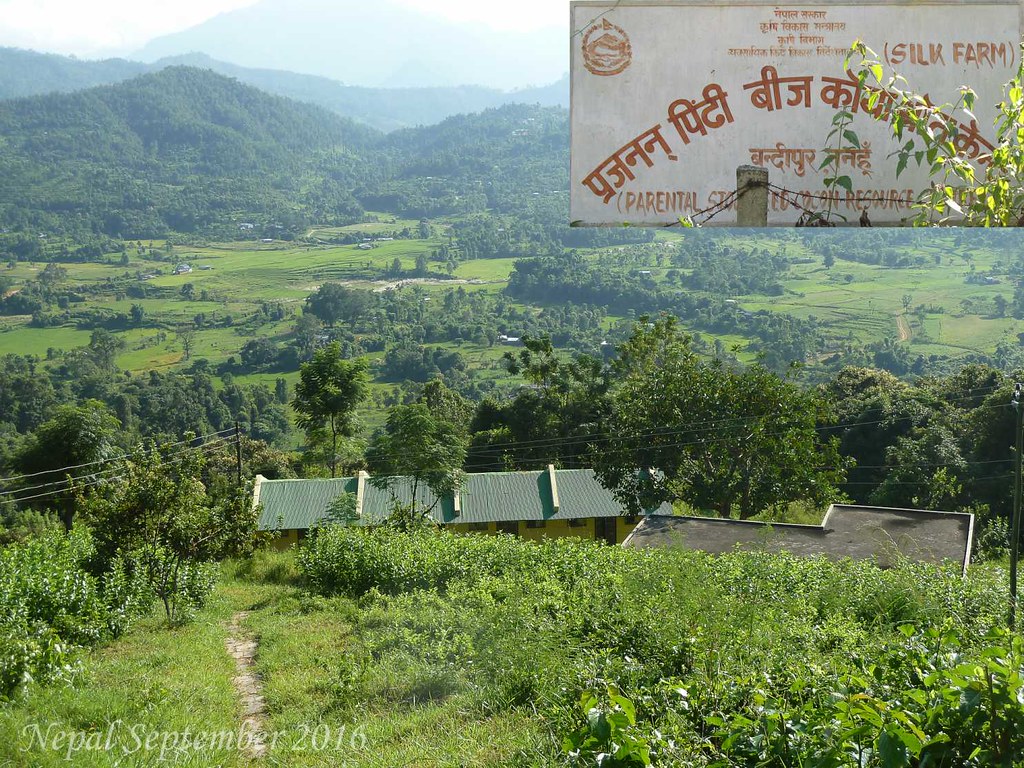

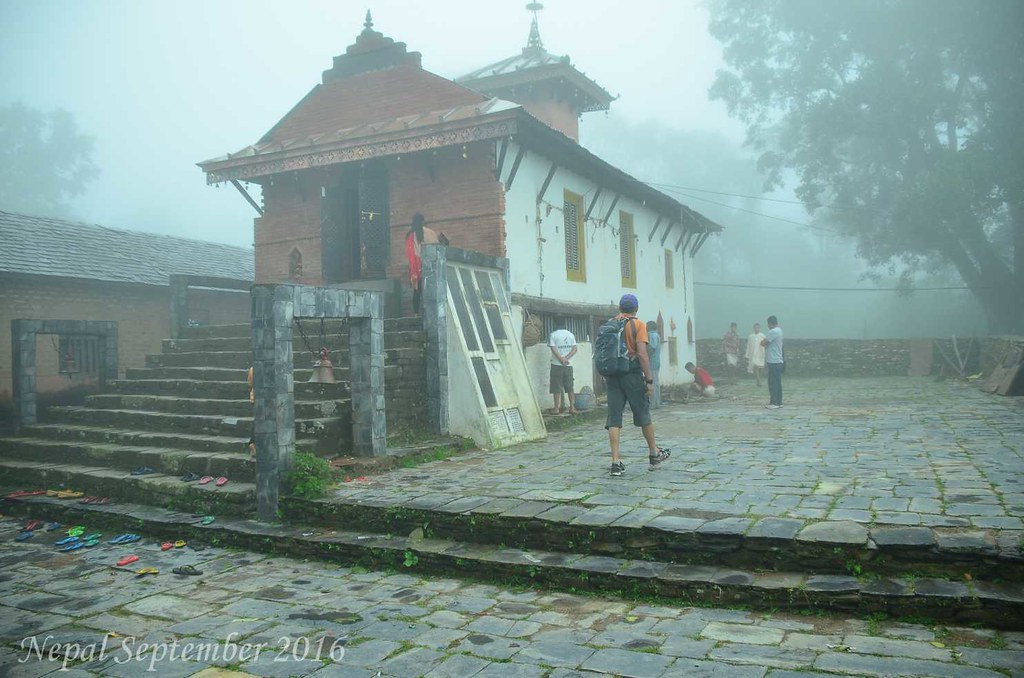
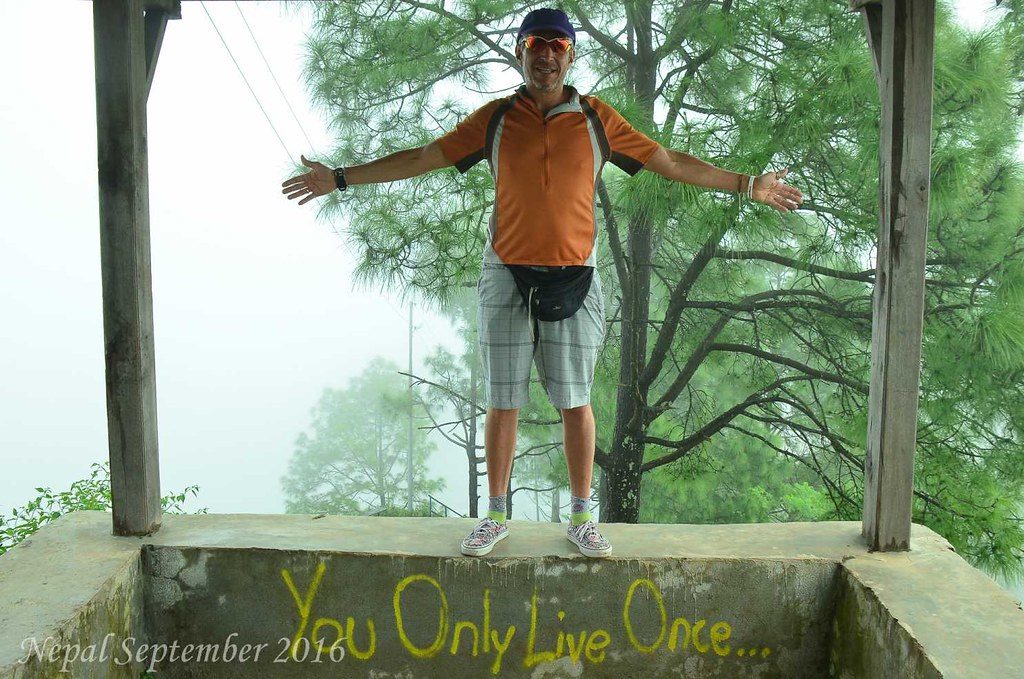

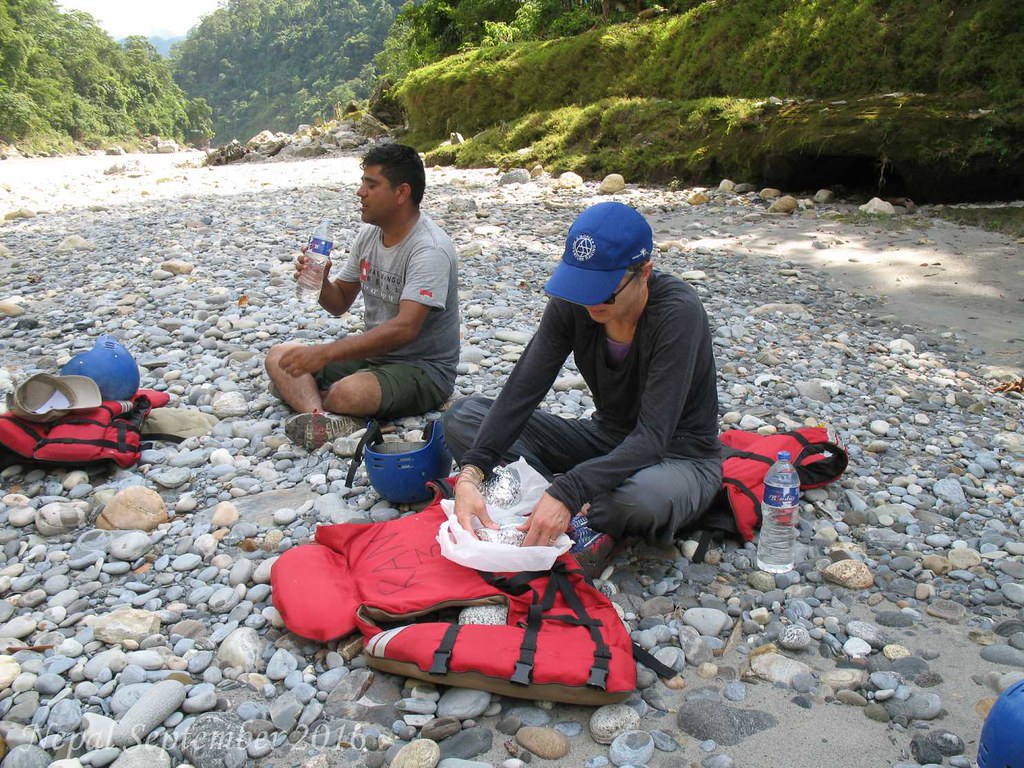
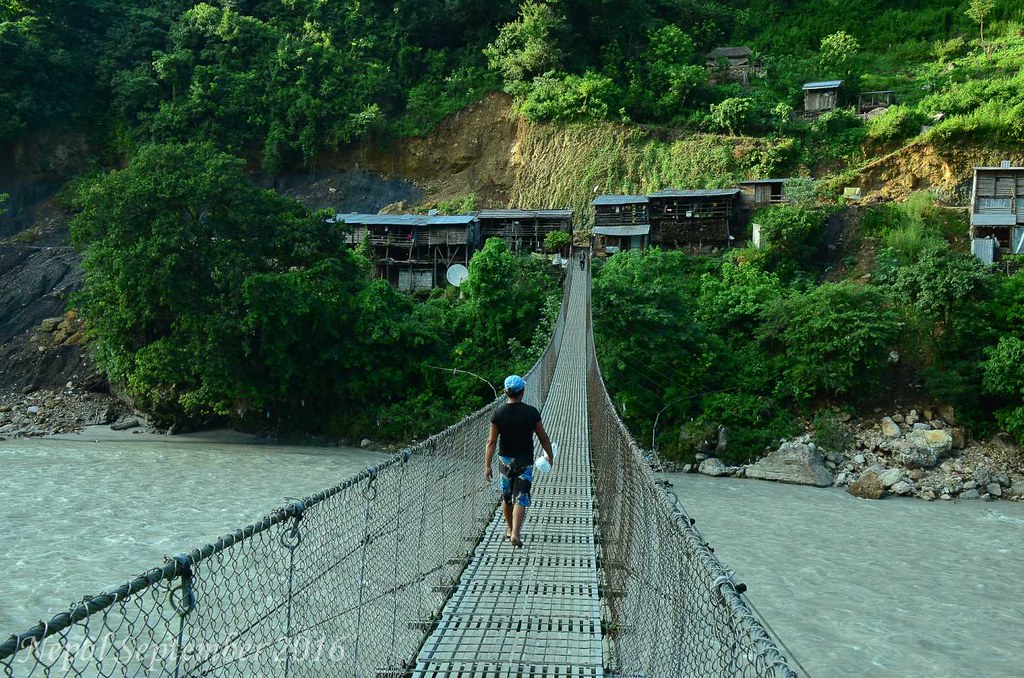






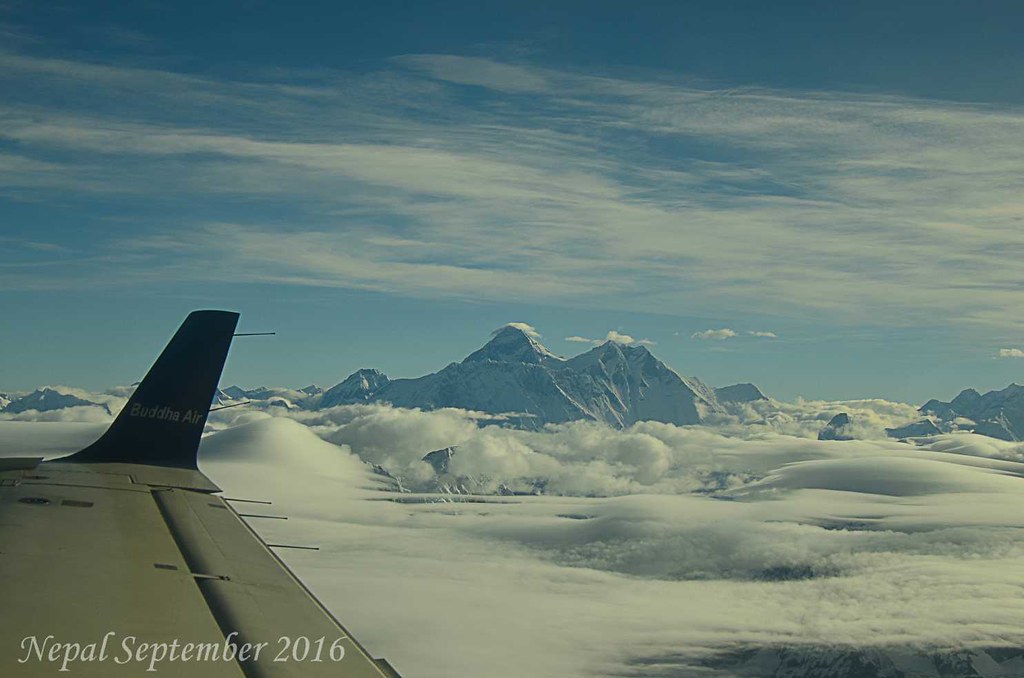
No comments:
Post a Comment